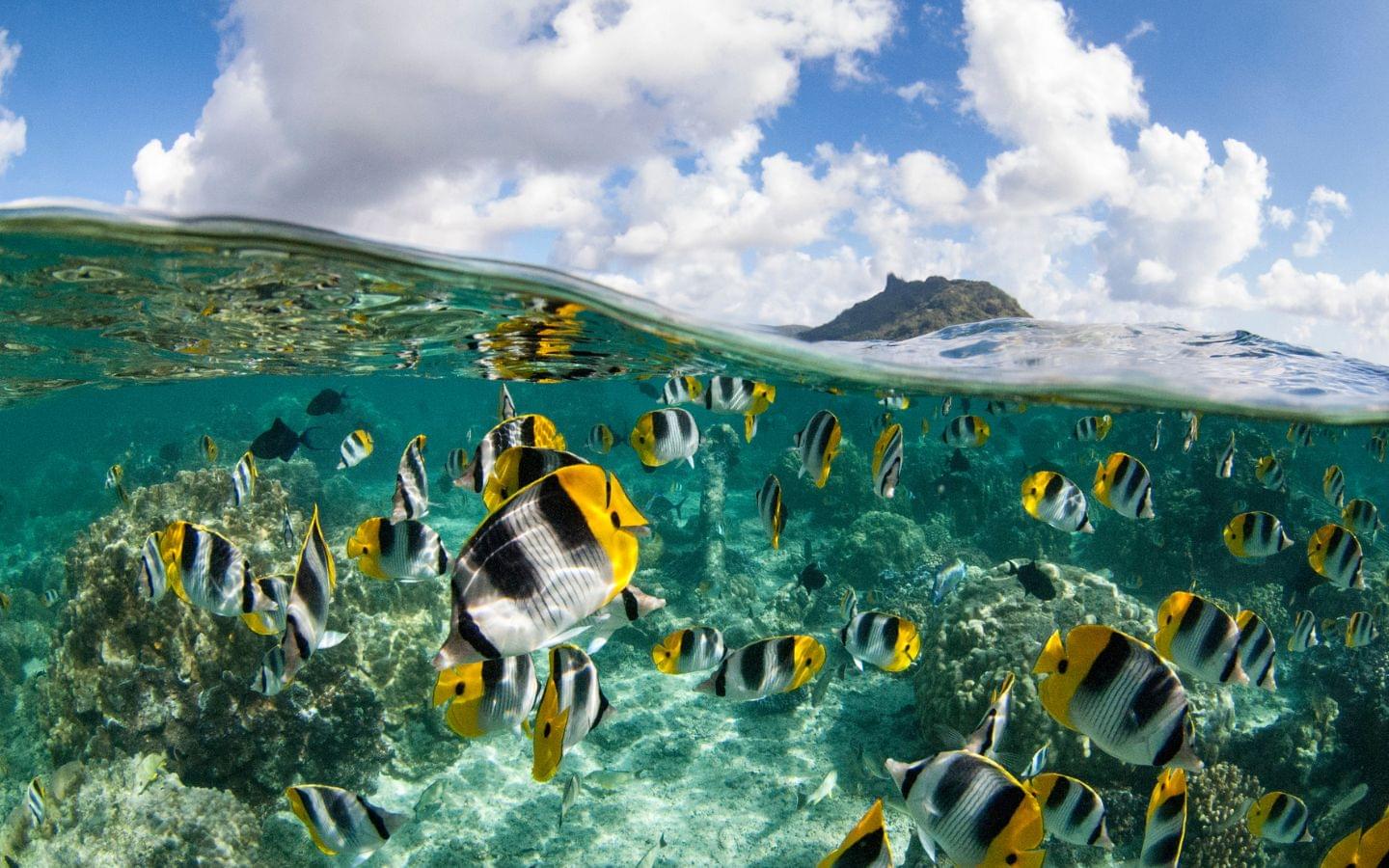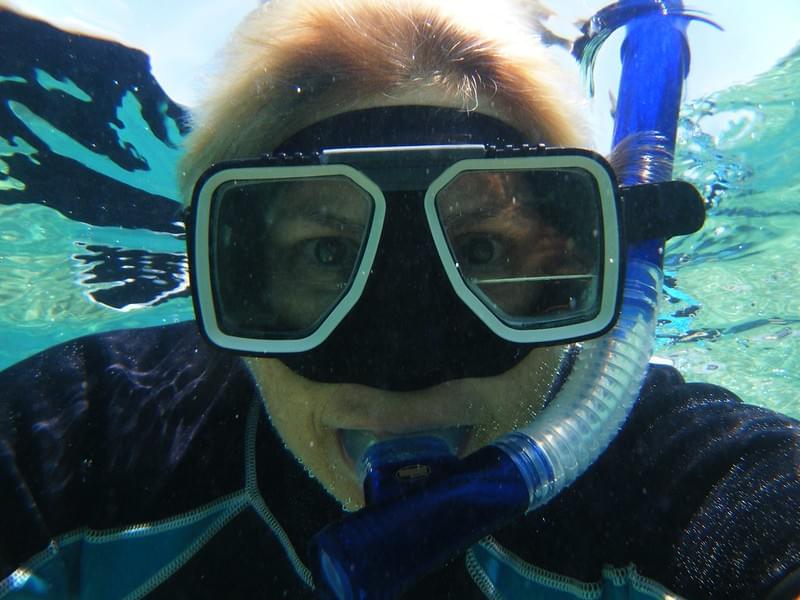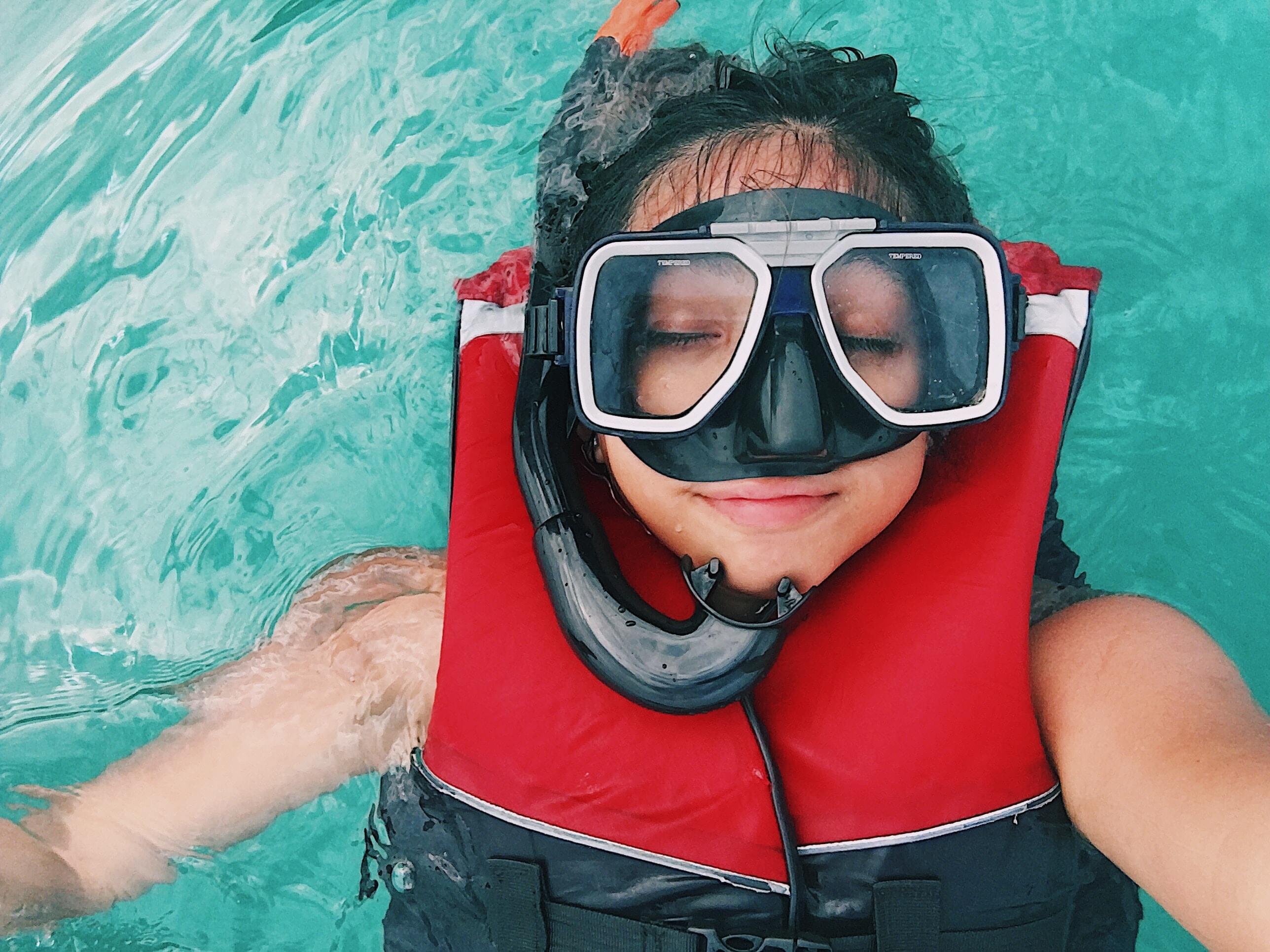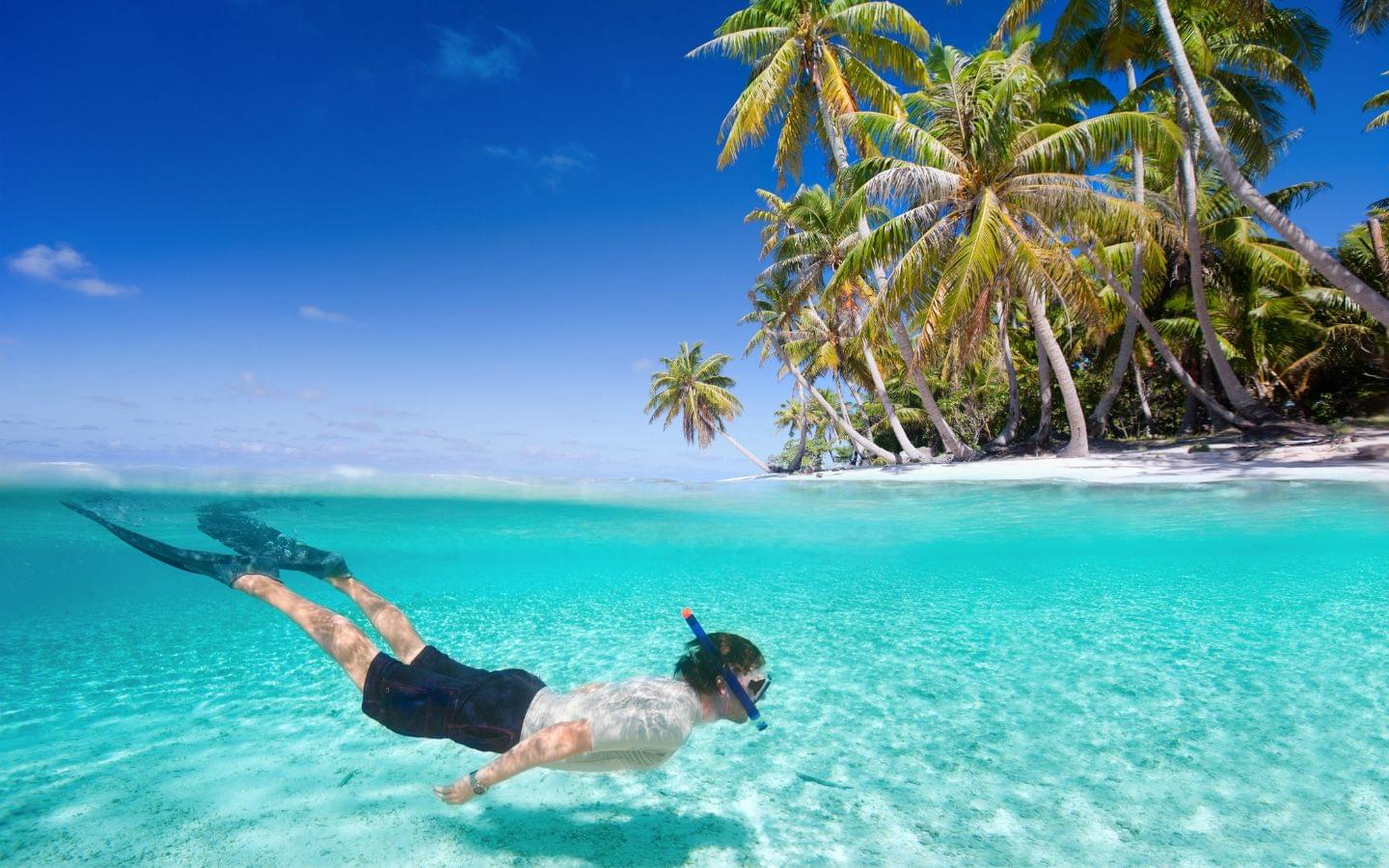The best snorkeling spots in the world (2025 update)
Dreaming of a snorkeling adventure? From swimming with humpbacks to seeing pristine coral reefs, here are the best places to snorkel around the globe.
Snorkeling is one of the most accessible and exciting ways to explore the underwater world. With a few essential pieces of snorkeling gear, you can jump into the water and experience the joys of this activity.
Finding the best places to snorkel can be overwhelming—there are so many options and factors to consider. We’ve done the research for you and compiled a carefully curated list of destinations where conditions are ideal for snorkeling in 2025. Some locations let you swim alongside humpbacks, whale sharks, mantas or penguins, while others stand out because of unique geological features like sinkholes and volcanic calderas.
Whether you’re a beginner or seasoned snorkeler, here are some of the world’s best places to jump in.
Maui, Hawaii
Why it’s unique: Protected coves, endangered species and rare volcanic islets
Easiest access: USA and Canada
Best time to go: Year-round
Places to stay: Napili Kai Beach Resort, Hyatt Regency Maui Resort & Spa, Four Seasons Resort Maui at Wailea
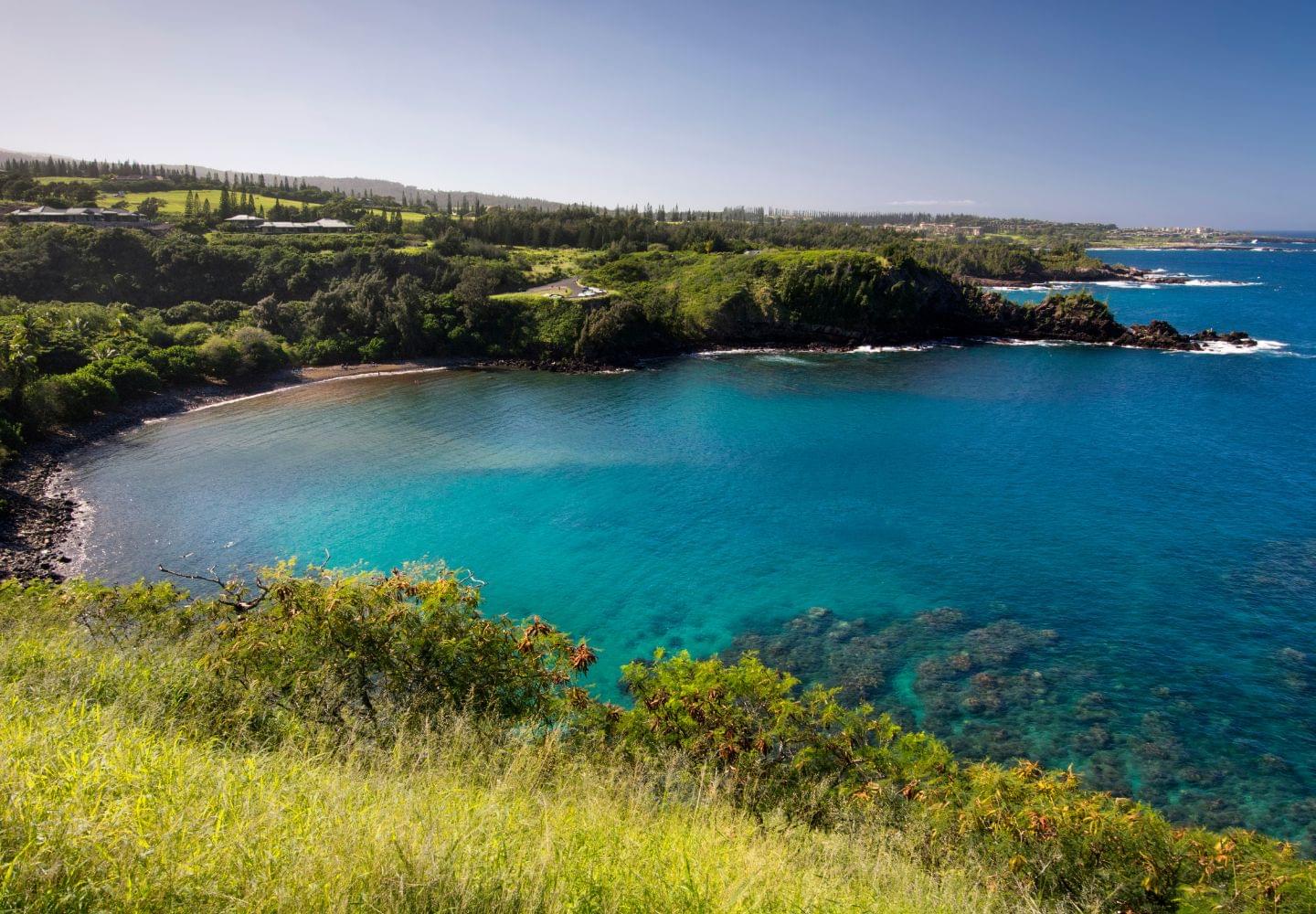
From protected coves perfect for beginners to offshore volcanic islets, Maui offers a range of snorkeling experiences. On the southern coast, Turtle Town features lava formations and endangered green sea turtles. Honolua Bay Marine Life Conservation Area, part of the Hawaiian Islands Humpback Whale National Marine Sanctuary, is a sheltered site with abundant sea life. For the best chance to spot migrating humpbacks, visit between January and March1.
Just offshore lies the Molokini Crater, one of only three volcanic calderas on the planet. Its clear water and vibrant reef make it a popular boat trip. Consider a day trip to nearby Molokai to see Hawaii’s longest fringing reef2.
Ari Atoll & Baa Atoll, Maldives
Why it’s unique: Swim with whale sharks and manta rays in one of the world’s most diverse marine ecosystems
Easiest access: Europe and Middle East
Best time to go: December–April and June–November
Places to stay: Vilamendhoo Island Resort & Spa, Amilla Maldives Resort & Residences, Finolhu Resort Baa Atoll Maldives
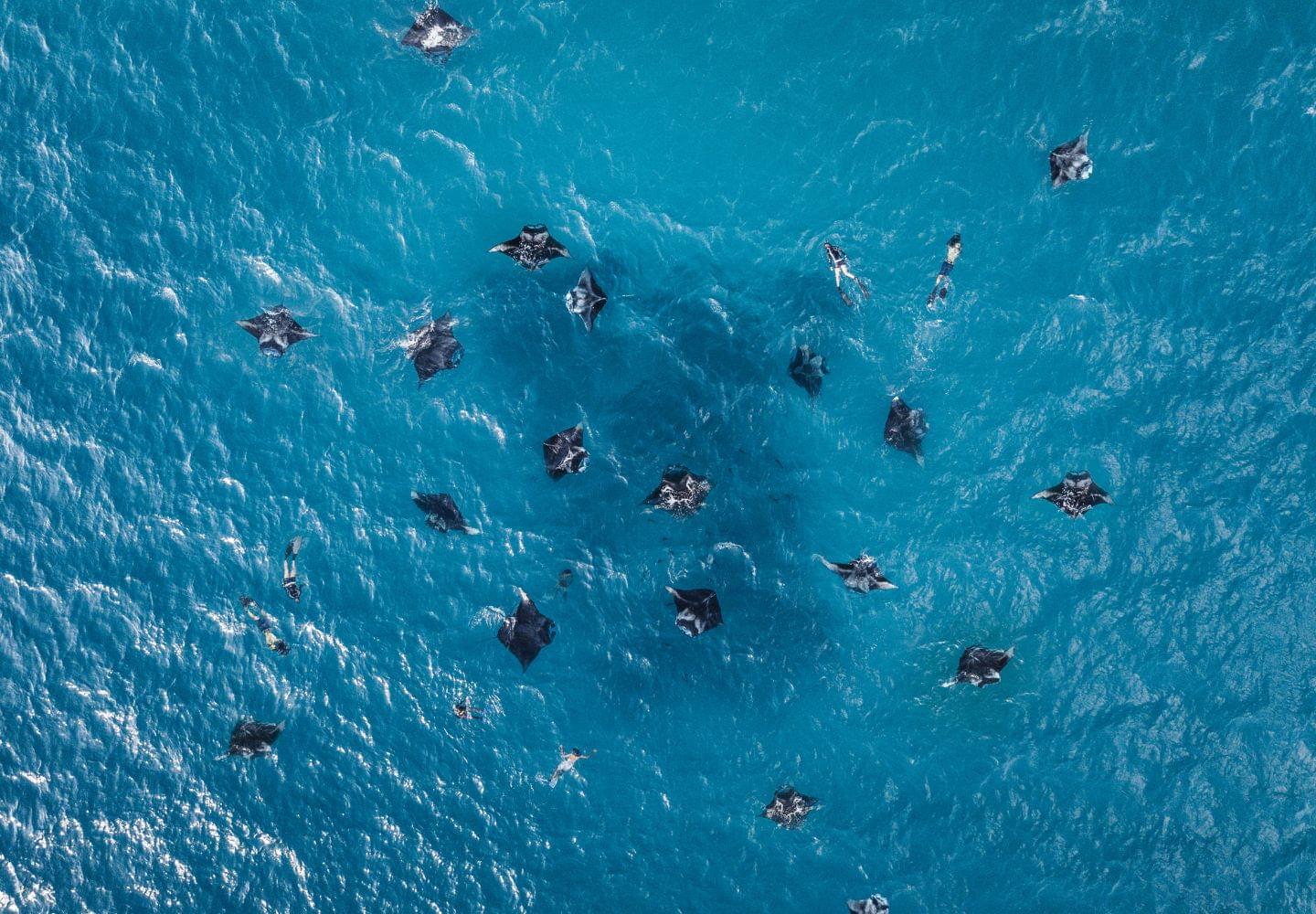
The Maldives archipelago has 26 natural atolls and more than 1 200 islands and islets3. Ari Atoll and neighboring Baa Atoll are hotspots for snorkelers. At Ari Atoll, you can swim with whale sharks and mantas, and its shallow lagoons and coral walls make snorkeling accessible for all skill levels. The resort island of Vilamendhoo is a good base, with reef flats home to eagle rays, reef sharks and clownfish.
Protected as a UNESCO Biosphere Reserve, Baa Atoll has one of the world’s largest manta ray feeding stations. Visit Hanifaru Bay during the plankton-rich months (typically June–October) to witness this phenomenon. For calmer, drier conditions, plan your trip between December and April.
Ningaloo Reef, Western Australia
Why it’s unique: Whale shark and humpback migrations and Australia’s largest fringing reef
Easiest access: Australia, New Zealand and Southeast Asia
Best time to go: Year-round
Places to stay: Ningaloo Reef Resort, Mantarays Ningaloo Beach Resort Exmouth
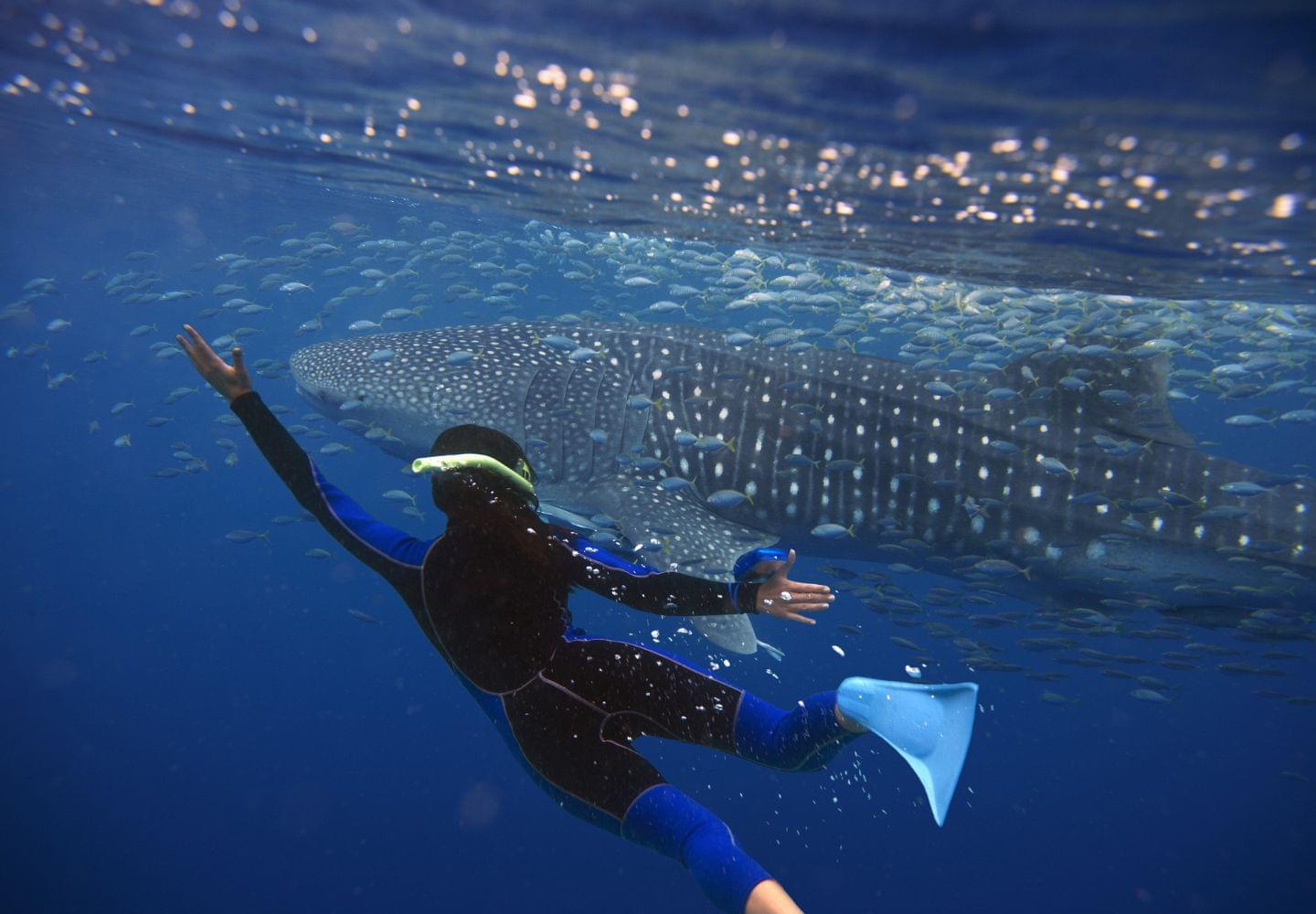
Although the Great Barrier Reef often grabs headlines, Ningaloo Reef is a must-see for snorkelers. Much of the 186-mile-long reef lies in a protected marine park, and you can access many sites directly from shore. Just steps from Coral Bay’s main beach, you’ll find some of the reef’s 300 coral species and 500 fish species4. A short boat ride takes you to sites like Blue Maze, where reef sharks, turtles and schools of fish are common.
Ningaloo is famous for seasonal whale shark (March–June) and humpback (late June–October) migrations. It’s one of the only places where you can swim with both species in the same year. Join a guided tour for a safe, unforgettable encounter.
Yucatán Peninsula, Mexico
Why it’s unique: Diverse ecosystems from sinkholes and underground rivers to the second-largest barrier reef
Easiest access: USA and Canada
Best time to go: November–May
Places to stay: Las Casitas Akumal, Excellence Riviera Cancun
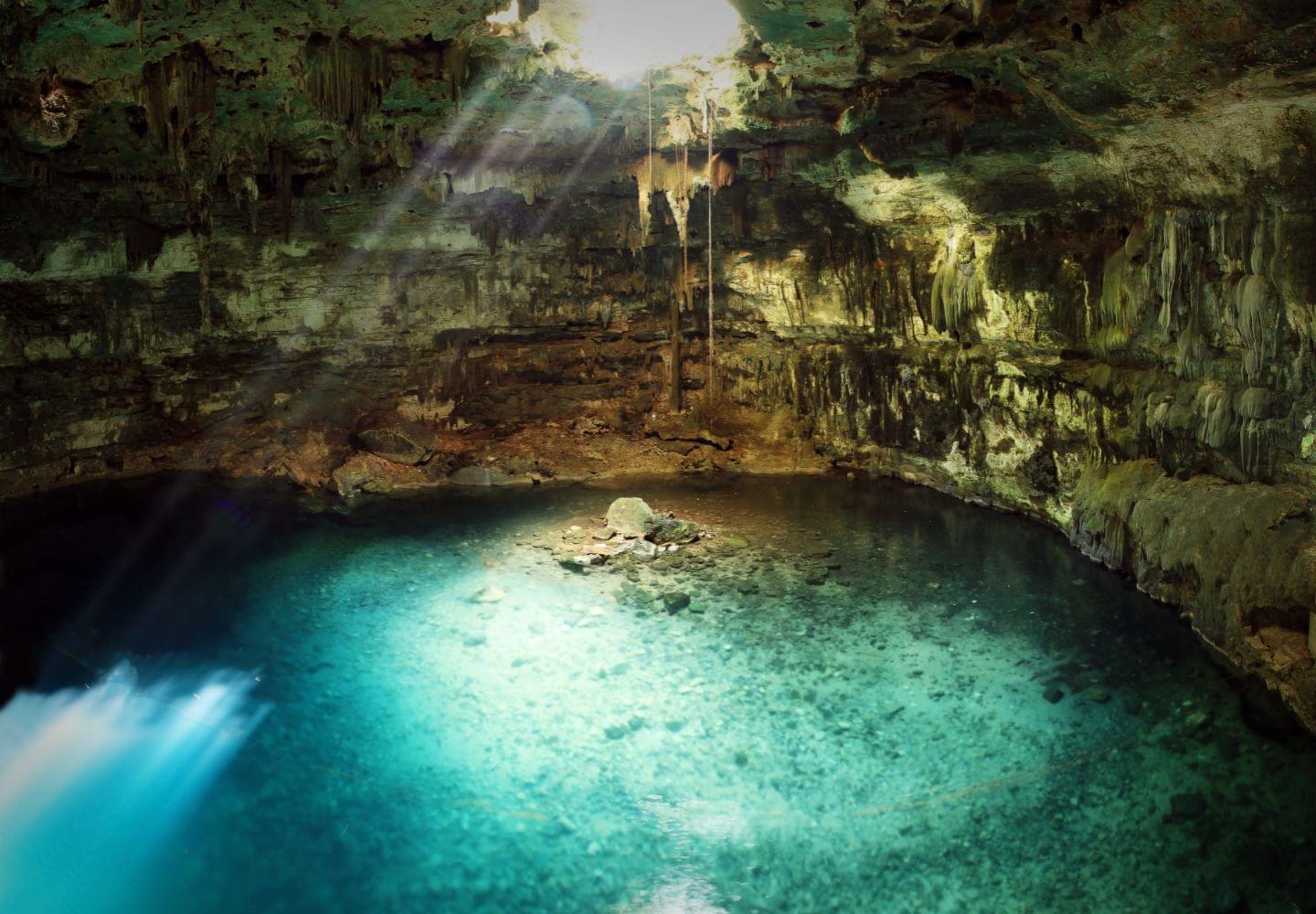
Few destinations offer as many different snorkeling experiences in such close proximity as the Yucatán Peninsula. In one trip, you can snorkel in flooded sinkholes (cenotes) and then head to the Caribbean Sea for reef snorkeling. The region is also home to the Mesoamerican Barrier Reef, the second-largest barrier reef in the world.
Don’t miss the underwater sculptures at the Cancún Underwater Museum (MUSA). Further south, the cenotes around Tulum provide a window into an underground river system—Dos Ojos is a standout. Offshore, take a snorkeling trip to explore the reef’s coral gardens and fish life5.
November through May is the dry season, offering the most comfortable conditions. However, if swimming with whale sharks is on your list, visit Isla Holbox or Isla Mujeres from mid-June to August.
Raja Ampat, West Papua, Indonesia
Why it’s unique: Incredible marine biodiversity—75% of the world’s coral species
Easiest access: Australia and Middle East
Best time to go: November–March
Places to stay: Misool Eco Resort, Tabari Dive Lodge, Agusta Eco Resort
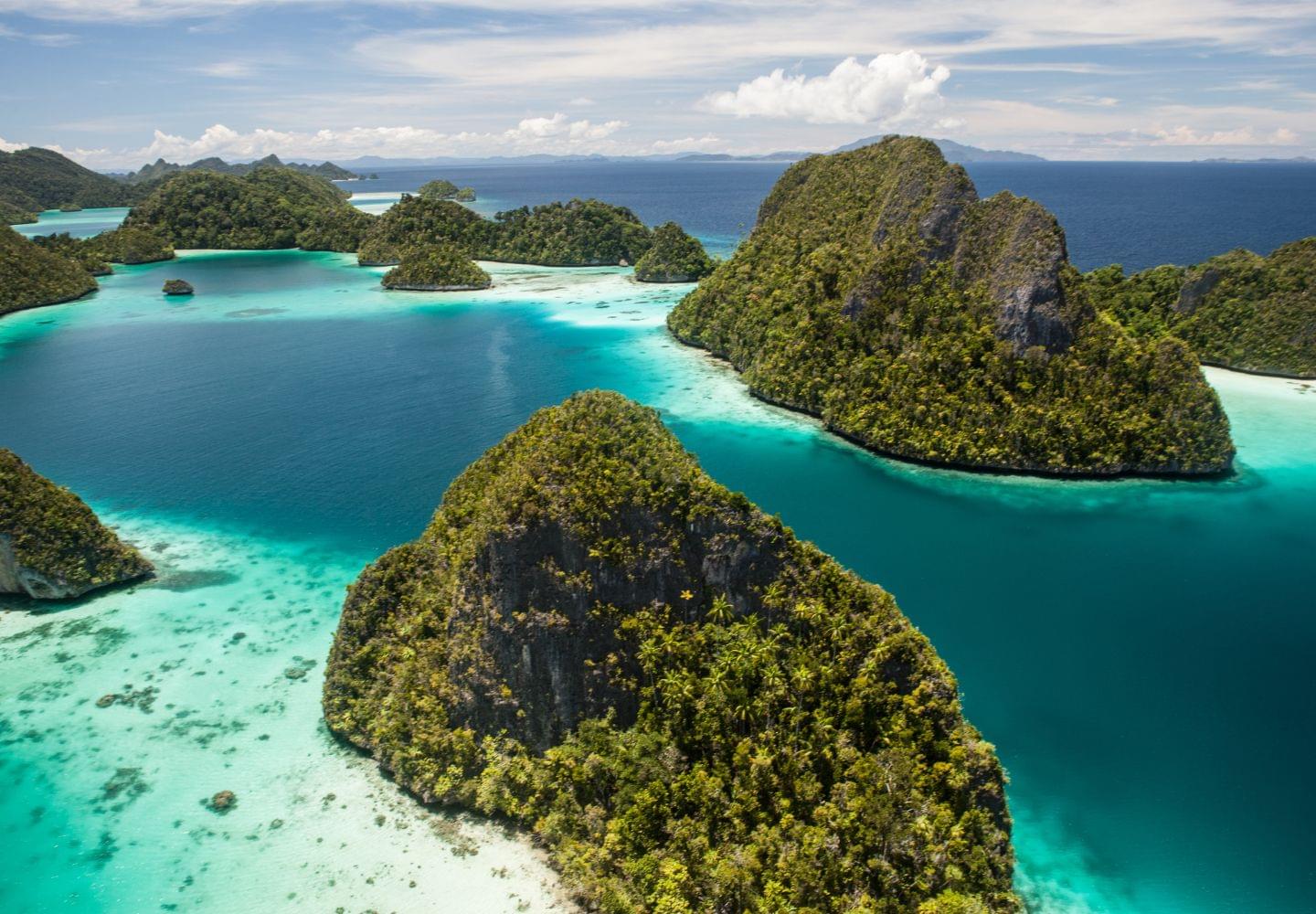
Located in the heart of the Coral Triangle, Raja Ampat boasts one of the richest concentrations of marine life on Earth. Its reefs host 75 percent of all known coral species and over 1 600 fish species6. Snorkelers can expect to see sea fans, urchins, nudibranchs, pygmy seahorses, sharks, tuna and dugongs.
Manta rays flock here between November and May, drawn by the plankton blooms7. For pristine reefs away from crowds, explore off-the-beaten-path sites like West Waigeo and Batanta. Easier access points include Friwen and Yenbuba Jetty on Mansuar Island. Gam Island, famous for its nudibranch diversity, offers clear water and mangrove-fringed reefs.
Ambergris Caye & Caye Caulker, Belize
Why it’s unique: Home to the Caribbean’s largest coral atoll and the famous Great Blue Hole
Easiest access: USA and Canada
Best time to go: December–May
Places to stay: Xanadu Island Resort, Weezie’s Ocean Front Hotel & Garden Cottages
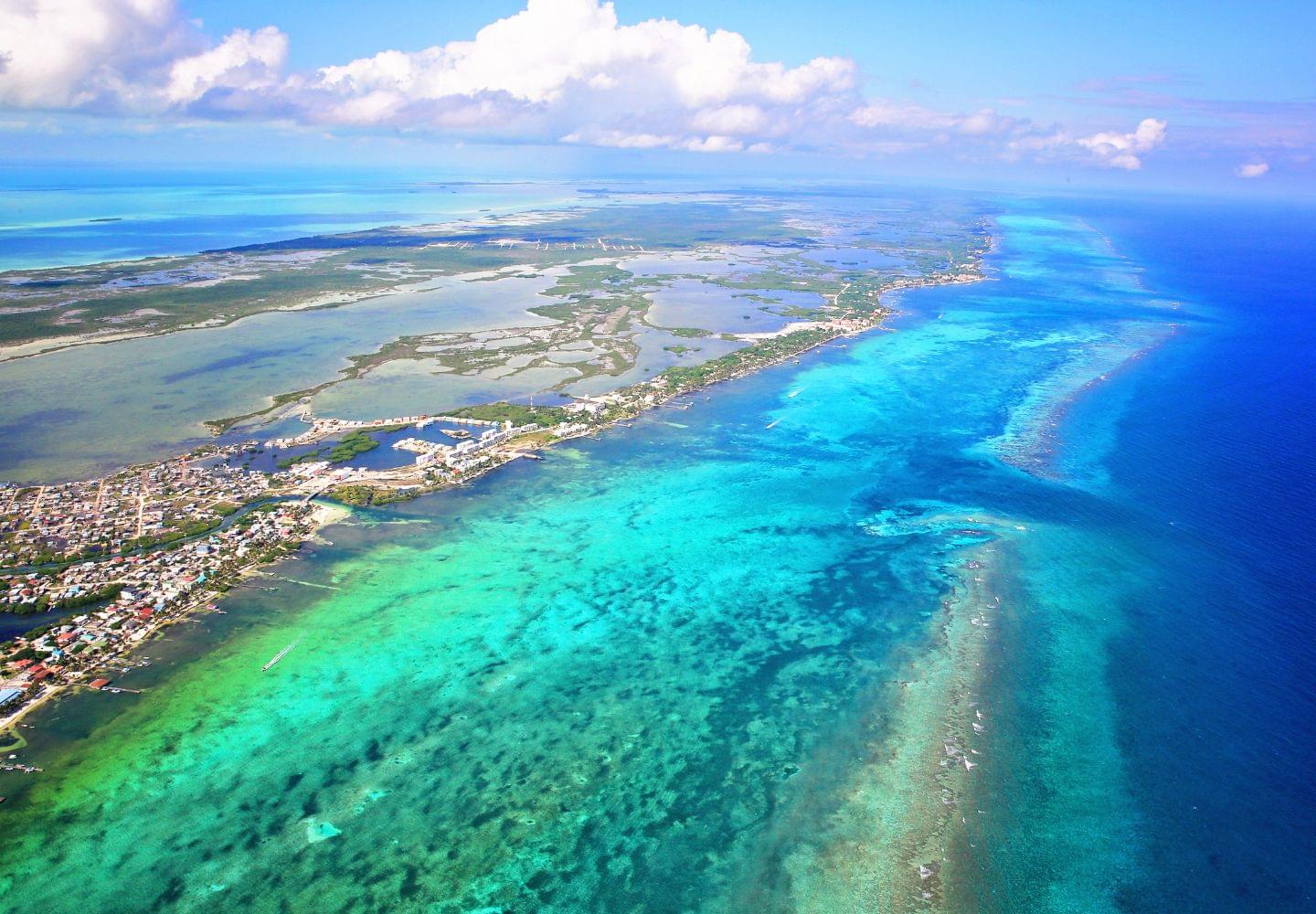
In Belize, the islands of Ambergris Caye and Caye Caulker make a superb base for snorkeling. Hol Chan Marine Reserve is the most popular site, where you can snorkel with stingrays, nurse sharks, corals and tropical fish. Trips depart from San Pedro and Caye Caulker.
If you have more time, visit the atolls. Turneffe Atoll is the Caribbean’s largest coral atoll, and Lighthouse Reef Atoll hosts the Great Blue Hole—a sinkhole nearly 1 000 feet across and over 400 feet deep. You can visit on day trips, but staying overnight at a resort such as Off The Wall Dive Center & Resort provides the best experience.
Marsa Alam, Egypt
Why it’s unique: Snorkel with rare dugongs and large pods of spinner dolphins
Easiest access: Europe and Middle East
Best time to go: Year-round
Places to stay: Hilton Marsa Alam Nubian Resort, Deep South Eco Lodge, The Oasis Dive Resort
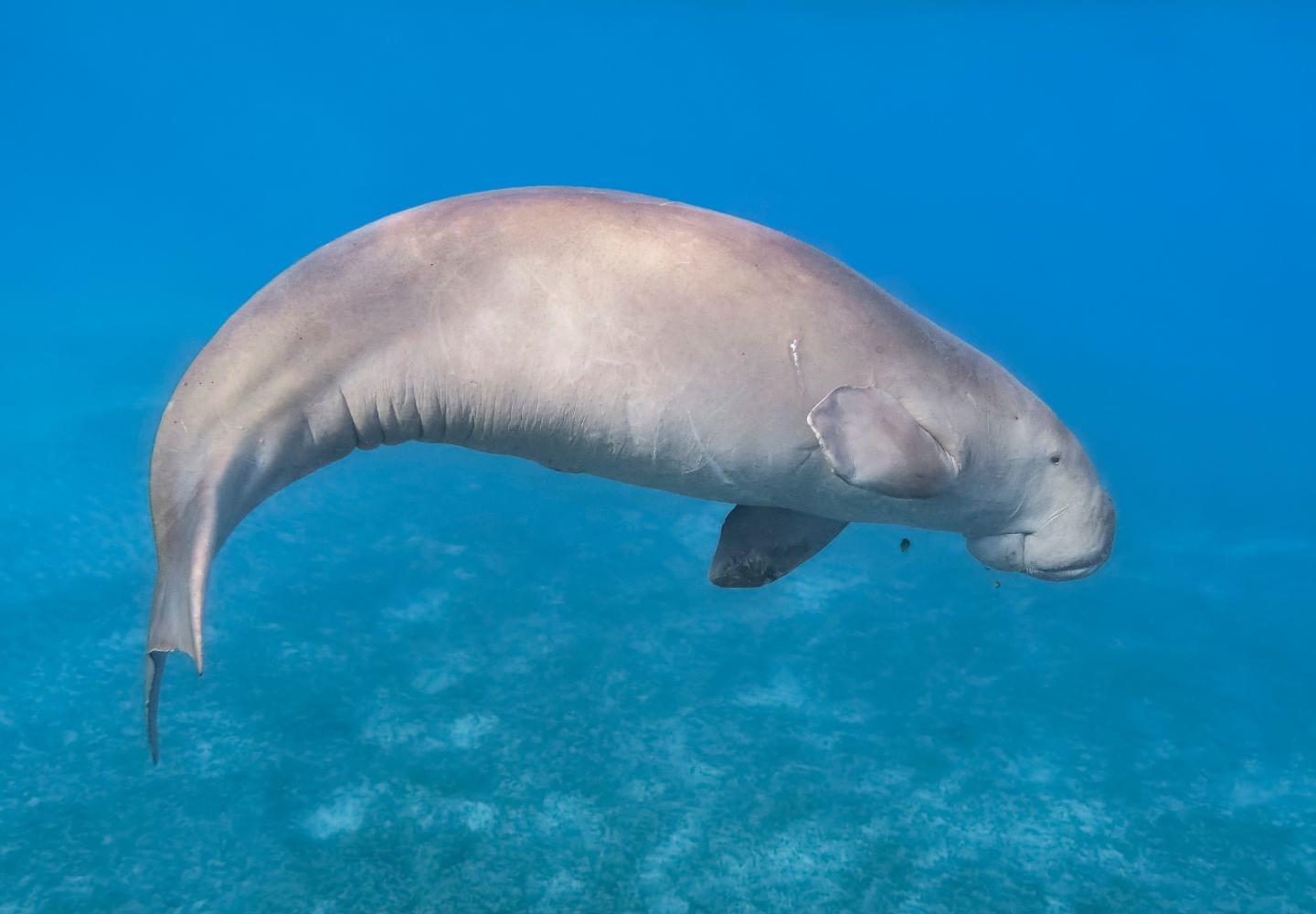
While Sharm El Sheikh is well known, Marsa Alam offers an uncrowded alternative along Egypt’s Red Sea coast. Abu Dabbab Bay is the area’s most famous site, with seagrass beds that attract green sea turtles, bluespotted ribbontail rays and occasional dugongs. For the best chance to see a dugong, head to Marsa Mubarak on a guided tour.
Two offshore reefs—Shaab Samadai (Samadai Reef) and Sataya (Dolphin House)—are home to large pods of spinner dolphins. Both are accessible only by boat, so it’s best to join a guided excursion.
Great Barrier Reef, Australia
Why it’s unique: The largest reef system on Earth and home to 10 percent of the world’s fish species
Easiest access: Australia, New Zealand and Southeast Asia
Best time to go: May–October
Places to stay: Lady Elliot Island Eco Resort, Novotel Cairns Oasis Resort
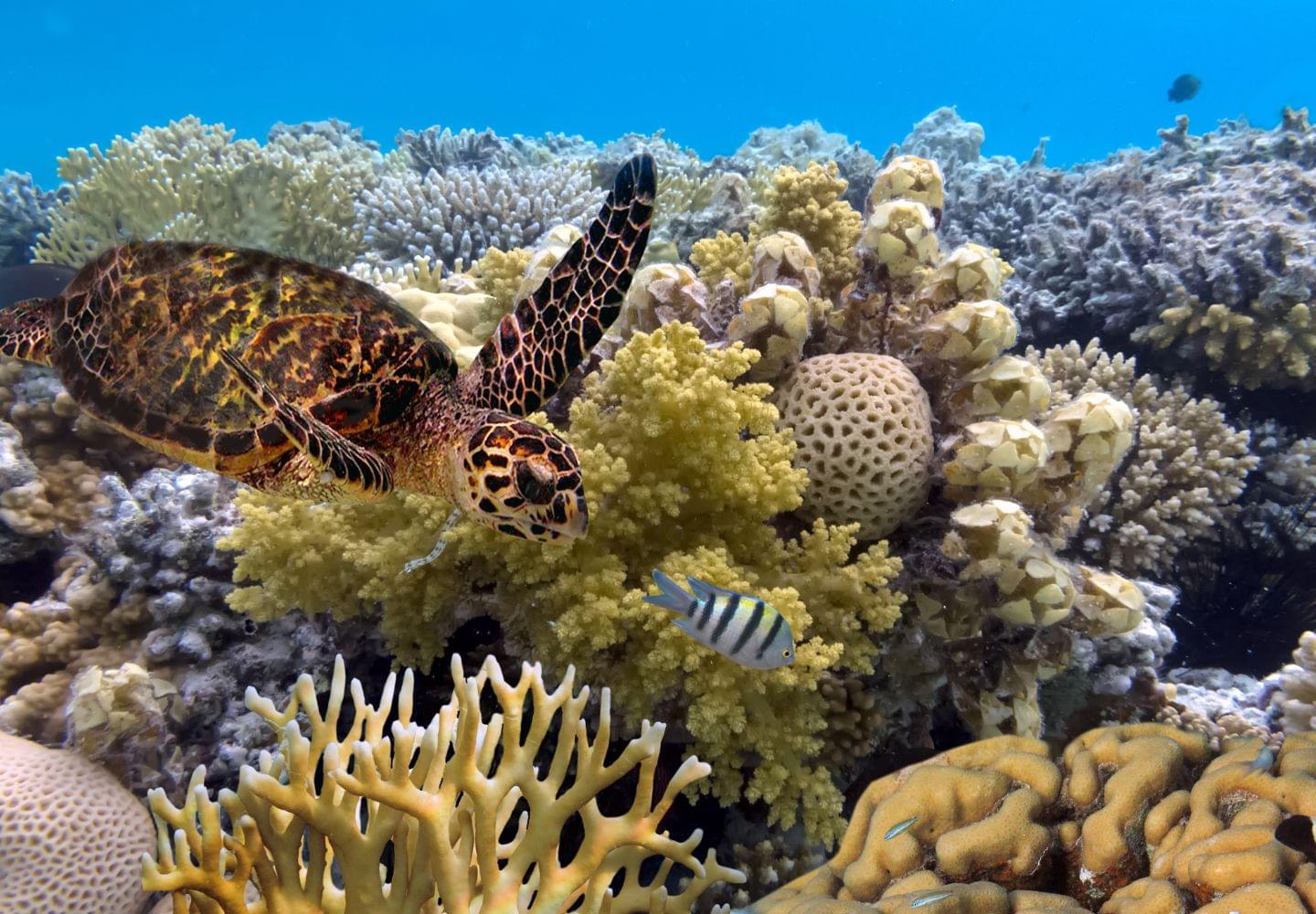
Stretching nearly 1 400 miles, the Great Barrier Reef comprises almost 3 000 individual reefs8. Massive bleaching events have taken a toll, but there are still many healthy sections worth visiting. Lady Elliot Island is a standout, with coral outcrops and a variety of sea creatures—including mantas, sea turtles, dolphins and sharks. Green Island near Cairns provides easy snorkeling from the beach and a chance to see stingrays, turtles and colorful fish. Keep in mind that the reef’s future is uncertain, so now is an opportune time to see it9.
Galápagos Islands, Ecuador
Why it’s unique: Endemic marine life found nowhere else
Easiest access: South America
Best time to go: November–May
Places to stay: Isamar Hotel, Galápagos Casa Playa Mann
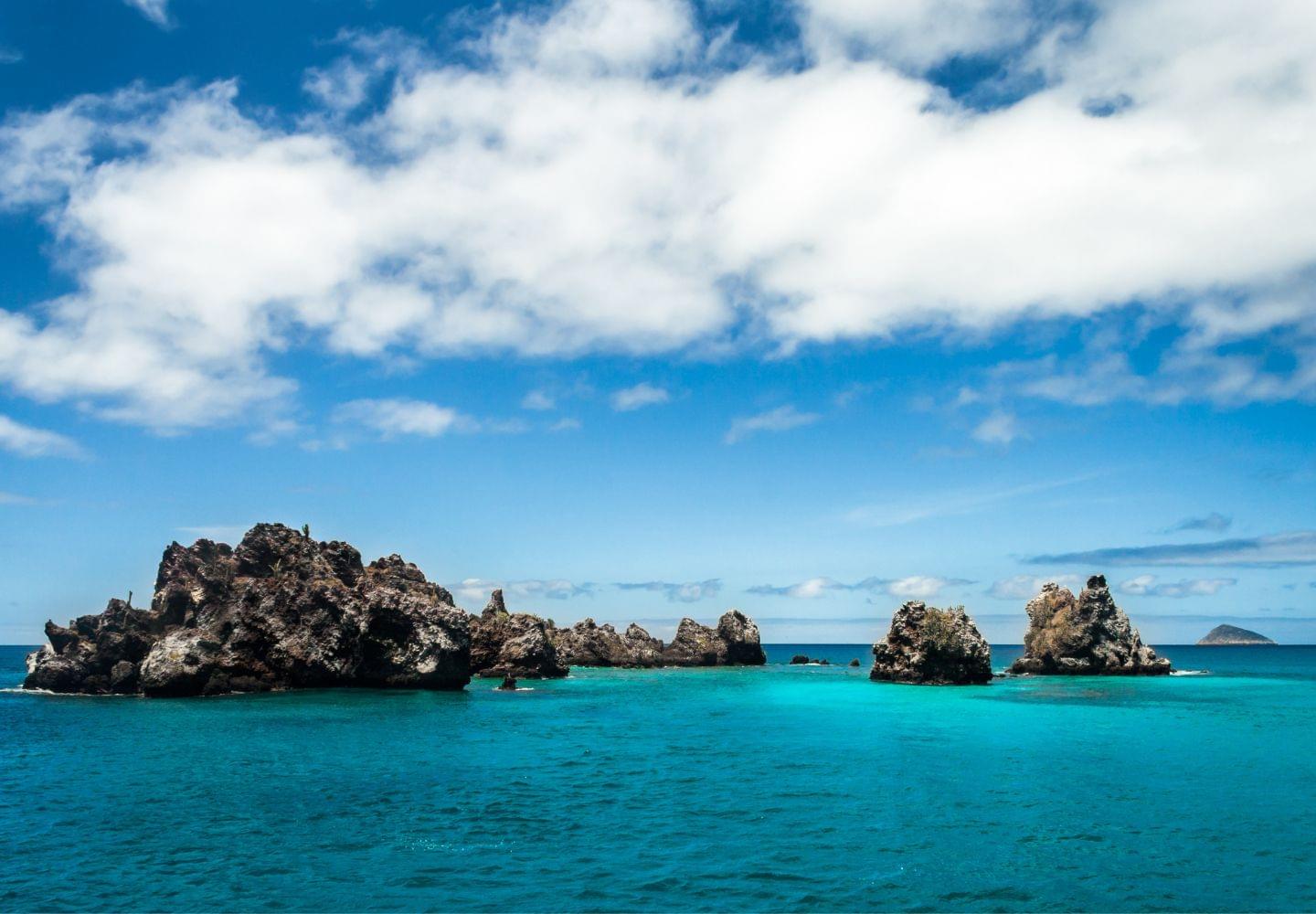
Located about 600 miles off Ecuador’s coast, the Galápagos Islands are renowned for endemic species. You can snorkel with penguins and flightless cormorants on Isabela and Fernandina Islands and see sea lions, rays, sea turtles and marine iguanas. Experienced snorkelers may also want to explore remote Floreana Island; its Devil’s Crown—an extinct volcanic crater—is home to hammerheads, whitetip reef sharks, spotted rays and more. Most sites require a permit and authorized guide, but Concha de Perla (near Puerto Villamil, Isabela) and Darwin Bay (San Cristóbal) are accessible independently. Opt for a day trip or a multi-day adventure to maximize your time.
Silfra Fissure, Iceland
Why it’s unique: Swim between two tectonic plates
Easiest access: Europe, USA and Canada
Best time to go: Year-round
Places to stay: Basalt Hotel, Austurey Cottages
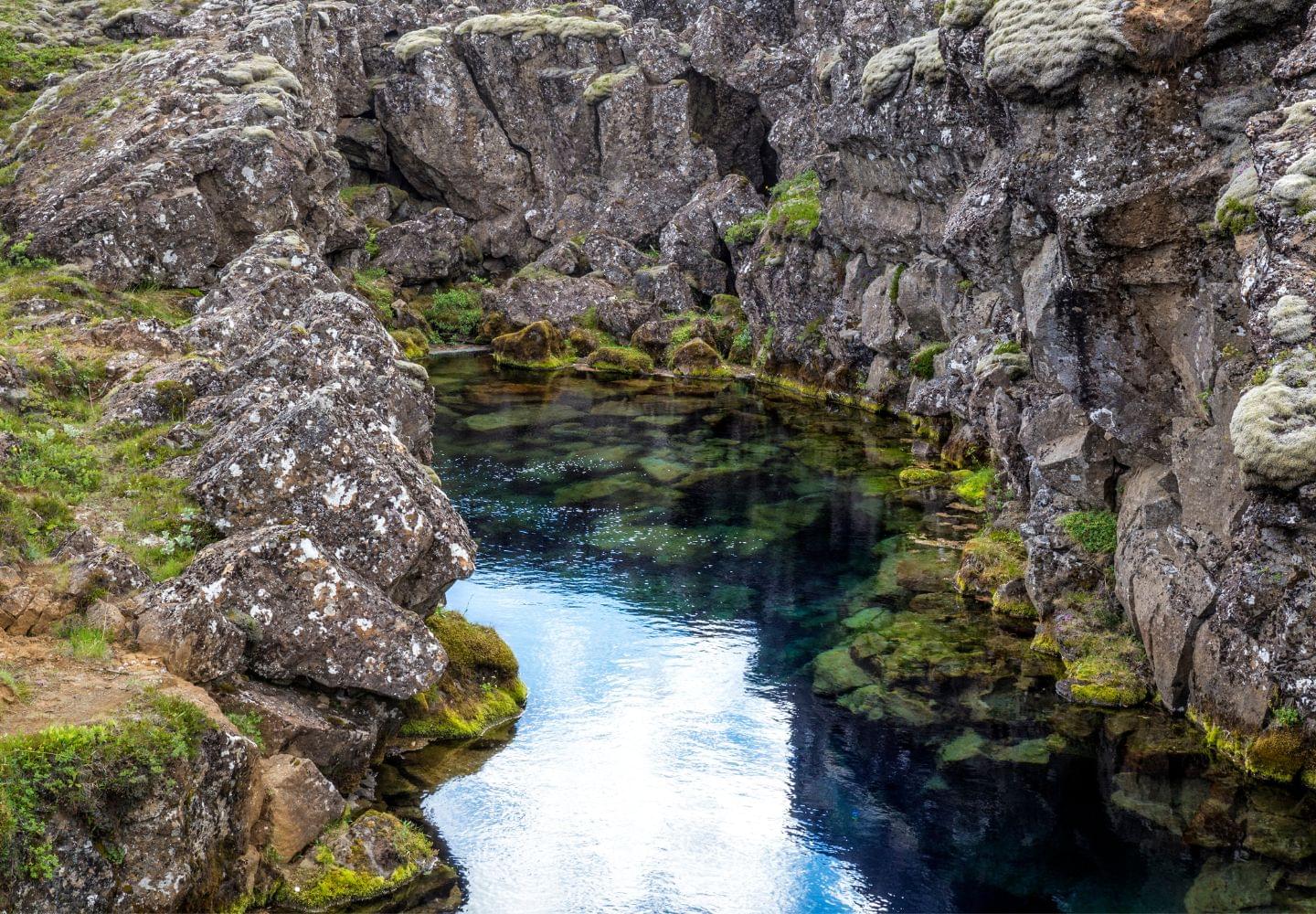
For a snorkeling experience like no other, head to Iceland’s Thingvellir National Park. Silfra Fissure is the only place where you can snorkel between two diverging tectonic plates—the North American and Eurasian plates10. Crystal-clear glacier meltwater filters through lava rock, providing unparalleled visibility. Tours include a dry suit, but the water is cold year-round. All excursions must be taken with a licensed operator—book your tour in advance.
Bora Bora, French Polynesia
Why it’s unique: Crystal-clear lagoons with blacktip reef sharks, stingrays and dense fish populations
Easiest access: Western USA & Hawaii, Australia, New Zealand
Best time to go: May–October
Places to stay: InterContinental Le Moana, Four Seasons Resort Bora Bora, Le Bora Bora by Pearl Resorts
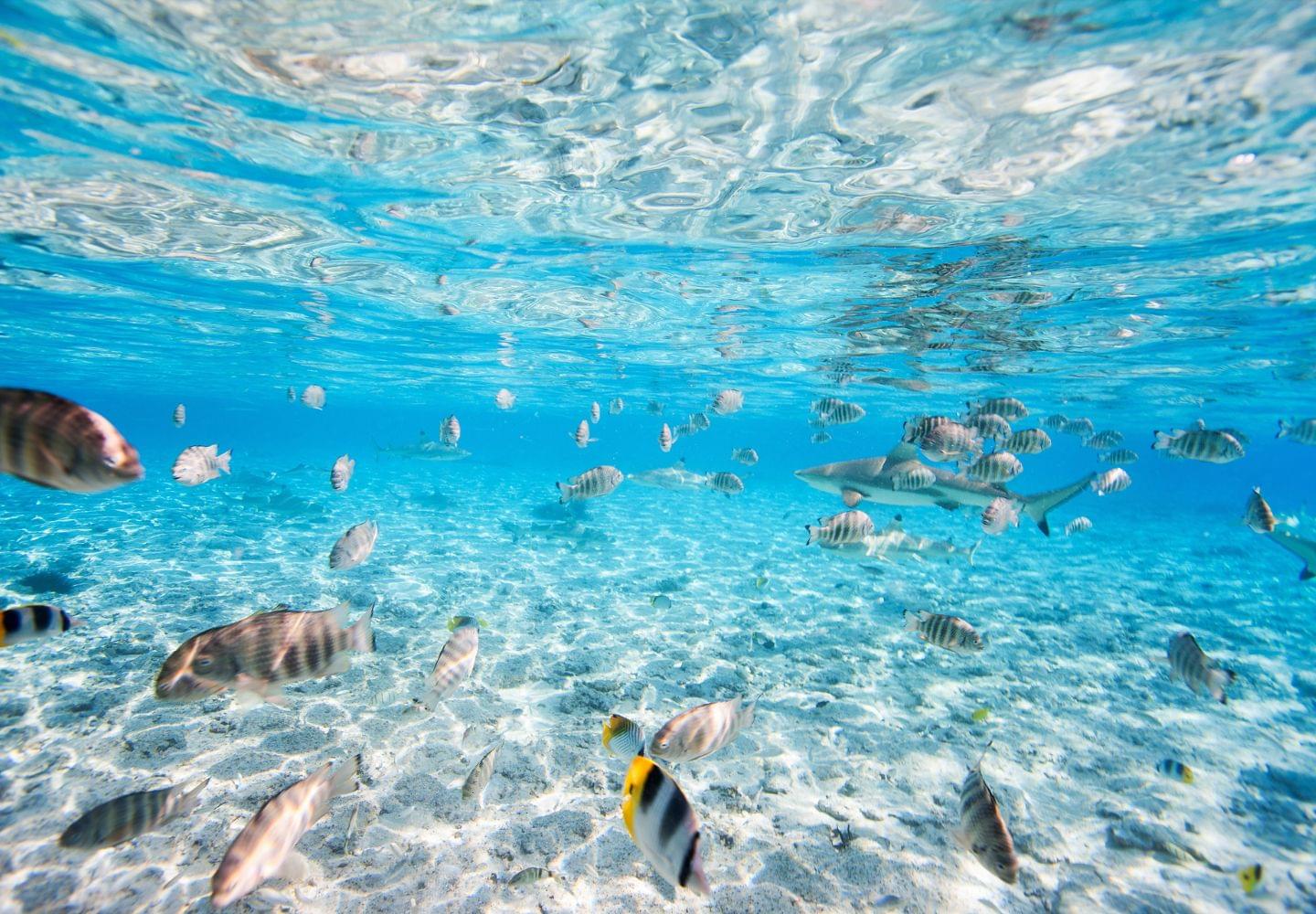
Bora Bora is the quintessential tropical paradise. Its turquoise lagoon shelters blacktip reef sharks, stingrays and an astonishing array of fish. Snorkel in the Inner Reef to see curious stingrays and reef sharks, or venture to the Outer Reef for a chance at lemon sharks. The Four Seasons Resort’s lagoon is teeming with triggerfish, wrasse, stingrays and more, while The Aquarium—near the InterContinental Le Moana—has coral gardens filled with parrotfish, clownfish and moray eels. Visit during the dry season (May–October) for the best weather.
Andros Island, The Bahamas
Why it’s unique: World’s largest concentration of blue holes and third-longest barrier reef
Easiest access: USA
Best time to go: December–May
Places to stay: Andros Beach Club, Small Hope Bay Lodge
Andros Island in The Bahamas stands out for its blue holes—water-filled sinkholes connected to underwater cave systems—and its barrier reef, which stretches over 140 miles11. Blue holes are more often explored by divers, but experienced snorkelers can visit shallower ones to see reef fish feeding around the rims. For easier snorkeling, head to Liben’s Point and Central Park, where elkhorn and star corals abound. Direct flights from Fort Lauderdale take only about 40 minutes, making Andros an easy escape for Americans.
Palawan, Philippines
Why it’s unique: Part of the Coral Triangle, with some of the world’s most biodiverse reefs
Easiest access: Australia and Southeast Asia
Best time to go: November–June
Places to stay: NoaNoa Island Resort, Coconut Garden Island Resort, Matinloc Resort
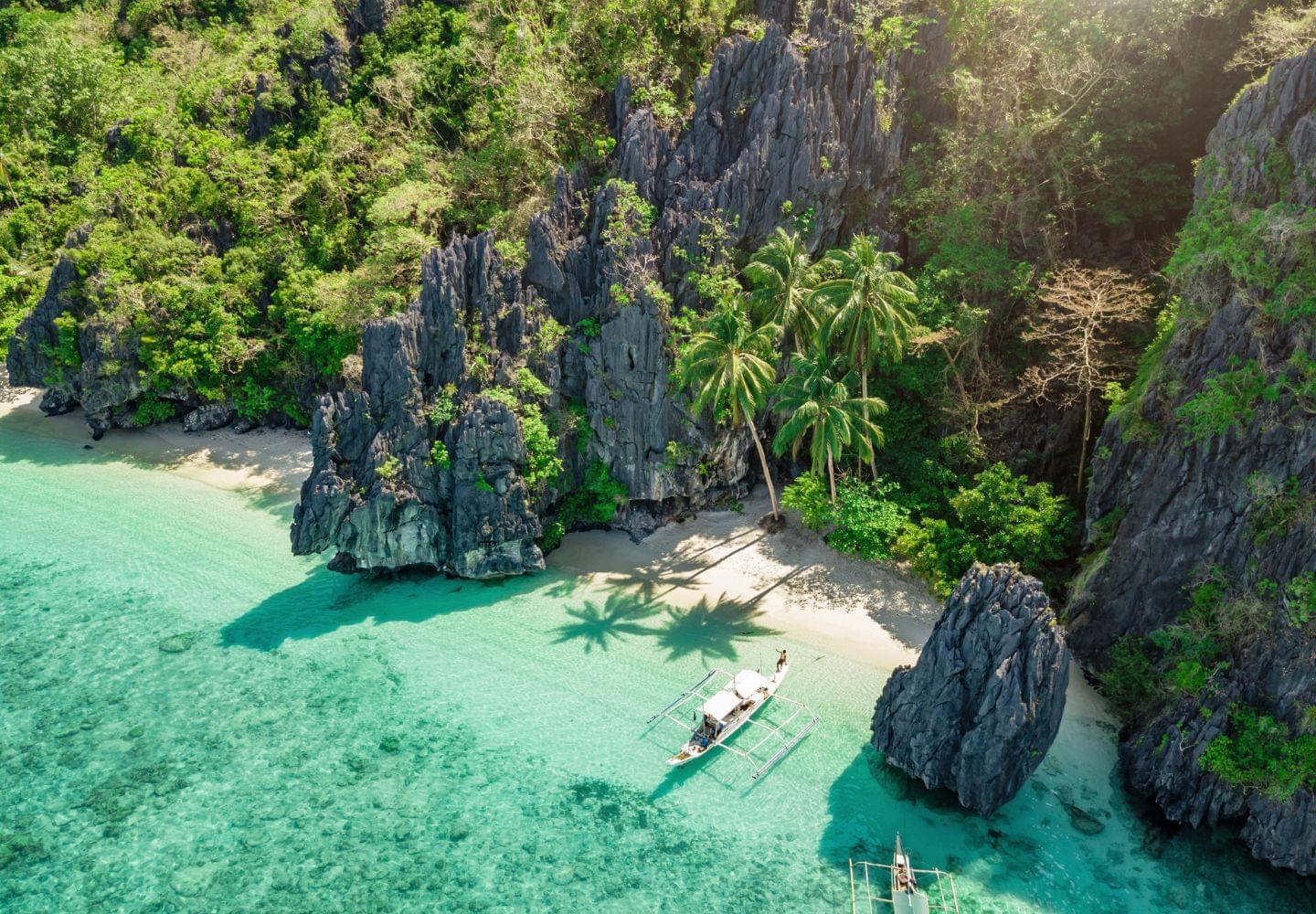
Palawan is part of the Coral Triangle, a marine hotspot with 379 coral species12. Snorkelers can see dugongs, whale sharks and turtles in these biodiverse waters. Siete Pecados near Coron and Matinloc Island near El Nido offer exceptional snorkeling, with fish so abundant it feels like swimming in an aquarium.
For something exclusive, stay at the private NoaNoa Island resort, which has pristine reefs. Cacnipa (Cagnipa) Island, reached by boat from Port Barton, offers excellent beach-front snorkeling. For history buffs, the East Tangat Gunboat wreck near Tangat Island starts at just 10 feet, making it accessible to snorkelers and underwater photographers13.
Frequently asked questions
What do I need to bring on a snorkeling trip?
At minimum, you’ll need a mask, snorkel and comfortable swimwear. Fins, fin socks, a snorkel vest, a swim buoy with an attached dive flag, a rash guard, sun protection and a wetsuit may also be recommended or required depending on your destination. For lightweight and travel-friendly gear suggestions, see our article on what to wear snorkeling.
How should I prepare for my snorkeling trip?
Before you travel, research your destination, check weather and sea conditions and pack accordingly. When booking guided trips, find out whether equipment is provided. Inspect your gear at home to ensure a proper fit and that everything is in good condition. Confident swimmers don’t need special physical preparation, but if you’re new to snorkeling, practice with your gear in a pool or calm water. For more tips, browse our snorkeling tutorials.
Resources
-
Sekula, Sarah. “10 of the Best Snorkeling Experiences in Hawaii.” Islands, 12 Jan 2023. islands.com. ↩
-
“Molokini Crater.” Pride of Maui. prideofmaui.com. ↩
-
Naseer, Abdulla. “Profile and Status of Coral Reefs in Maldives and Approaches to its Management.” Ministry of Fisheries and Agriculture. fao.org. ↩
-
“Ningaloo Reef.” Australia’s Coral Coast. australiascoralcoast.com. ↩
-
Heiderstadt, Donna. “Best Snorkeling Spots in the Bahamas.” Islands, 24 Jan 2019. islands.com. ↩
-
“Coral Triangle.” World Wildlife Fund. worldwildlife.org. ↩
-
“Palawan Biosphere Reserve.” UNESCO. unesco.org. ↩
-
“11 Amazing Facts About The Great Barrier Reef.” Sightseeing Tours Australia. greatbarrierreeftourscairns.com.au. ↩
-
Abitbol, Chantal. “Will the Great Barrier Reef – and its tourism – die by 2050?” CNN, 12 Jul 2017. edition.cnn.com. ↩
-
“Silfra Fissure Snorkeling Tour.” Arctic Adventures. adventures.is. ↩
-
McCall, Caitlin. “Humpback Whales – The World’s Best Places for Whale Watching and Swimming.” PADI, 9 Feb 2022. padi.com. ↩
-
“Baa Atoll: The Largest Manta Ray Aggregation in the World.” PADI. blog.padi.com. ↩
-
“Best Snorkeling Spots in the Bahamas.” Islands. islands.com. ↩
Last updated 30 August 2025
Table of contents
- Maui, Hawaii
- Ari Atoll & Baa Atoll, Maldives
- Ningaloo Reef, Western Australia
- Yucatán Peninsula, Mexico
- Raja Ampat, West Papua, Indonesia
- Ambergris Caye & Caye Caulker, Belize
- Marsa Alam, Egypt
- Great Barrier Reef, Australia
- Galápagos Islands, Ecuador
- Silfra Fissure, Iceland
- Bora Bora, French Polynesia
- Andros Island, The Bahamas
- Palawan, Philippines
- Frequently asked questions
